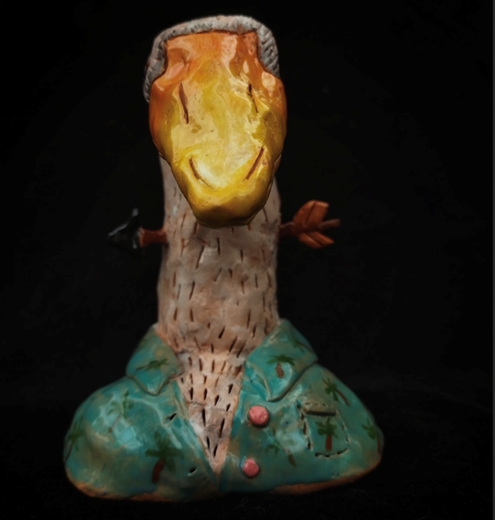The Jasper Project is excited to announce that ephemeral visual artist Thomas Washington will be our featured artist in the 701 Whaley Hallway Gallery for February 2024 with his one-person show LOVE QUEST.
There will be an opening reception on Sunday, February 11th from 3 - 5 pm in the gallery.
In keeping with 2023’s featured artists — Wilma King and Wayne Thornley and their two-person show Love Hurts/Love Heals — Washington’s exhibition of LOVE QUEST will show for the month of February and will coincide with the Jasper Project’s fundraising Valentine’s Day show and party INFAMOUS LOVERS on February 14th at 7pm in the 701 Whaley Market Space. (Tickets available here.) Infamous Lovers will feature the music of Fleetwood Mac cover band, BIG LOVE, Tiny Coven Dance, and more!
Washington’s reception on 2/11 is free and open to the public and will offer light refreshments.
More about Thomas Washington, in his own words …
“Perhaps the most important pursuit of an artist is the facilitation of Escapism. Perhaps each project is the equivalent of a Narnian door…or that lamppost beyond, coaxing a wanderer into another realm.
Thomas Washington Jr. (thomas the younger) functions on that premise. Since his childhood, he has produced multitudinous works in this vein—from being hired (out of high school) to illustrate in a local graphic anthology, he has subsequently striven to bring stories in every medium; to breathe life into the fantastical by imbuing it with the familiar…and, of course, to find fun and fulfillment along the way.
As a result, it required the birth of his children to make him care about money. (He still struggles with this.) –For years, he was perfectly fine living as a Bohemian: he laid his head in strange places among strangers, eventually becoming a pleasant strain of strange in the process. He thus entertains all sorts of bizarre notions—the importance of world peace, an unshakeable belief in fundamental similarities that make Humanity one big family, intense opinions on interstellar travel, and so-forth.
Recently, he took the leap of emerging in his local scene. He has sat on panels, joined the instructor roster for community arts centers, partaken in various shows, (finally!) founded a website, and essentially joined the dialogue of Art’s Place in Society.








